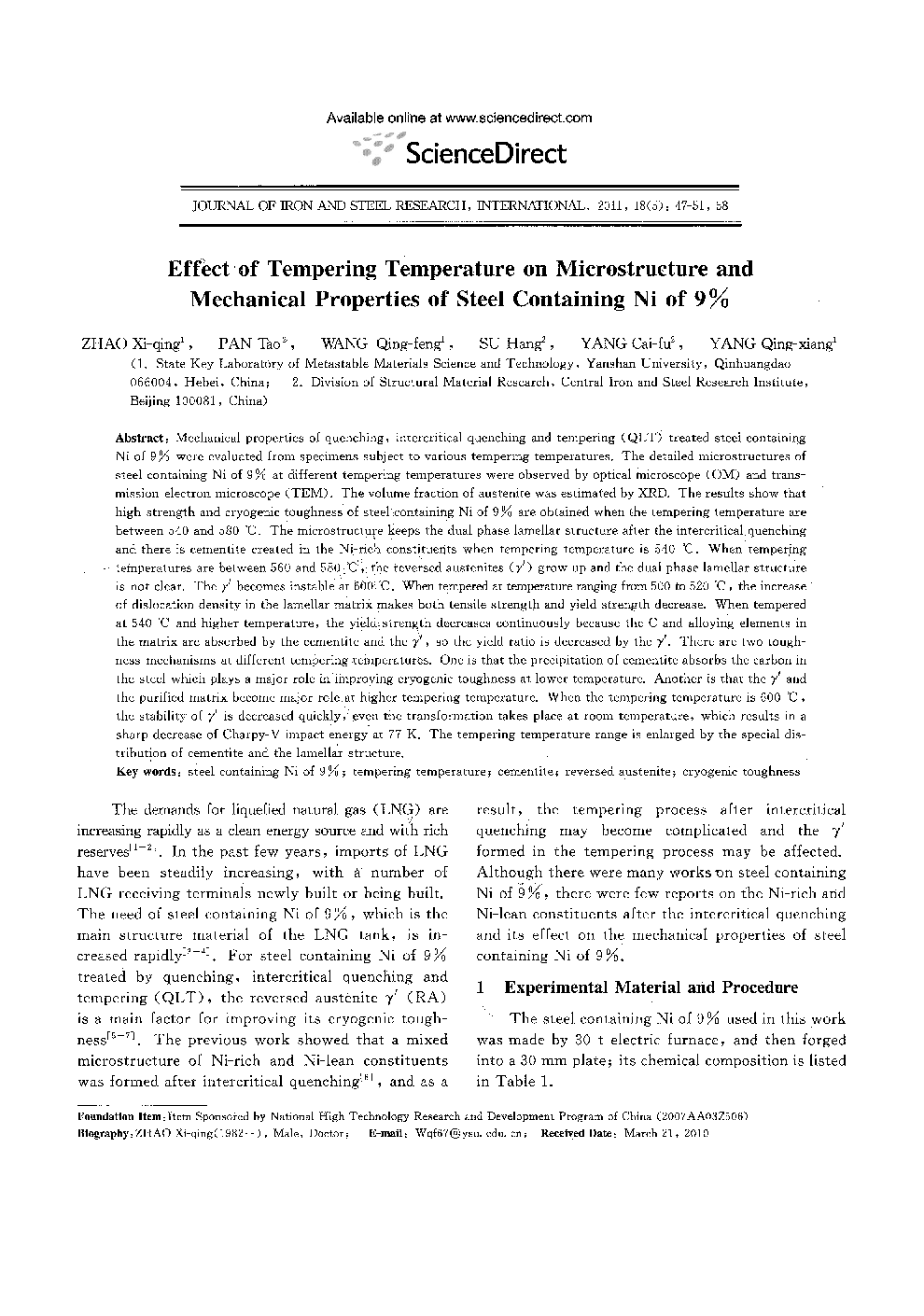| کد مقاله | کد نشریه | سال انتشار | مقاله انگلیسی | نسخه تمام متن |
|---|---|---|---|---|
| 1629437 | 1006143 | 2011 | 6 صفحه PDF | دانلود رایگان |
عنوان انگلیسی مقاله ISI
Effect of Tempering Temperature on Microstructure and Mechanical Properties of Steel Containing Ni of 9%
دانلود مقاله + سفارش ترجمه
دانلود مقاله ISI انگلیسی
رایگان برای ایرانیان
موضوعات مرتبط
مهندسی و علوم پایه
مهندسی مواد
فلزات و آلیاژها
پیش نمایش صفحه اول مقاله

چکیده انگلیسی
Mechanical properties of quenching, intercritical quenching and tempering (QLT) treated steel containing Ni of 9% were evaluated from specimens subject to various tempering temperatures. The detailed microstructures of steel containing Ni of 9% at different tempering temperatures were observed by optical microscope (OM) and transmission electron microscope (TEM). The volume fraction of austenite was estimated by XRD. The results show that high strength and cryogenic toughness of steel containing Ni of 9% are obtained when the tempering temperature are between 540 and 580 °C. The microstructure keeps the dual phase lamellar structure after the intercritical quenching and there is cementite created in the Ni-rich constituents when tempering temperature is 540 °C. When tempering temperatures are between 560 and 580 °C, the reversed austenites (γâ²) grow up and the dual phase lamellar structure is not clear. The γⲠbecomes instable at 600 °C. When tempered at temperature ranging from 500 to 520 °C, the increase of dislocation density in the lamellar matrix makes both tensile strength and yield strength decrease. When tempered at 540 °C and higher temperature, the yield strength decreases continuously because the C and alloying elements in the matrix are absorbed by the cementite and the γâ², so the yield ratio is decreased by the γâ². There are two toughness mechanisms at different tempering temperatures. One is that the precipitation of cementite absorbs the carbon in the steel which plays a major role in improving cryogenic toughness at lower temperature. Another is that the γⲠand the purified matrix become major role at higher tempering temperature. When the tempering temperature is 600 °C, the stability of γⲠis decreased quickly, even the transformation takes place at room temperature, which results in a sharp decrease of Charpy-V impact energy at 77 K. The tempering temperature range is enlarged by the special distribution of cementite and the lamellar structure.
ناشر
Database: Elsevier - ScienceDirect (ساینس دایرکت)
Journal: Journal of Iron and Steel Research, International - Volume 18, Issue 5, May 2011, Pages 47-51, 58
Journal: Journal of Iron and Steel Research, International - Volume 18, Issue 5, May 2011, Pages 47-51, 58
نویسندگان
Xi-qing ZHAO, Tao PAN, Qing-feng WANG, Hang SU, Cai-fu YANG, Qing-xiang YANG,